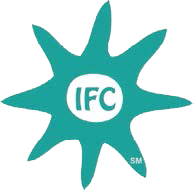In my frequent interactions with a wide range of patients and families dealing with serious illnesses, healthcare providers, researchers, and folks working to innovate solutions to our many pressing healthcare challenges, the concept of patient-centered care has emerged as a hot topic. This is a good thing. Whenever and wherever care for seriously ill people is provided it should – ideally – be focused intently and exclusively on the care recipient. Before the advent of our modern, professional, healthcare system with its vast, hierarchical division of labor, patient-centered care was the norm. It was primarily provided in the home by family caregivers. Family members were the original providers of patient-centered care and still are.
The big challenge with institutionally driven concepts of patient centeredness versus traditional family caregiving is basically the lack of acknowledging what I call “quotidian care cultures” that exist in every community. There were legacy care “paradigms” functioning in discrete communities long before healthcare modernized, and they are still embedded in our many and increasingly diverse ethnic/cultural groups. Our pluralistic society is teeming with care legacies – ways of providing support for sick and debilitated family members that have been handed down through the generations. Institutional efforts to embrace a patient-centered care model amounts to adding a formal layer of healthcare management and accountability on top of already deeply rooted informal practices. The two forms of patient-centered “praxis” are not incompatible, but they require mutual respect.
In many ways this is the root of the healthcare dilemma we currently face: a system intended to treat some more or less exclusively is attempting to adapt to a society that is both rapidly “aging in place” and becoming much more culturally diverse. Rapid aging means a much greater emphasis on unpaid family caregivers as care providers going forward. Greater diversity means a much more varied set of cultural practices – and attitudes toward the current system – that must be taken into account in designing institutional patient-centered strategies. Institutional strategies will have to connect with and lock into what already exists on the ground in communities. That’s a tall order. Institutional healthcare is attempting to turn back the clock to a more patient-centered approach, but the original praxis has never gone away. At IFC we believe that original patient-centered praxis is situational and culturally specific family caregiving.
-Willetha
